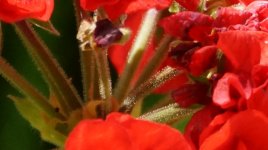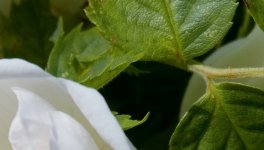I'm a fan of densely-packed sensors, and
I'm in no doubt whatsoever that - properly implemented - more pixels can mean not only no noise penalty but a noise
advantage. I see the truth of this every day with my 7D.
I mention this to show that I'm predisposed to a positive opinion of the sensor in these cameras - I'm not going to bash just because it's a Sony.
So with that said: I'm not at all impressed.
From the
site linked to on the Ephotozine page,
this is a 200 ISO example, and at full res (yes, pixel-peeping) it's
very noisy indeed.
I don't
habla Español so I don't know if this is because it's a pre-prod body (although that rarely matters much); or because the RAW converter used doesn't fully support the cameras, but it's not a good start.
I've also downloaded and converted some of the RAWs (Raw Therapee
does support the A77), and although at low ISOs the conversions are OK, they're nothing to write home about, really.
The 500 ISO example I converted isn't pretty though. And - crucially - it's not good at the
image level: even without pixel-peeping (instead resizing the file to 1000 px longest side), the image looks noisy and lacking in detail. A 1000 px, 500 ISO image should look noise free.
And at high ISO, I've never seen more chroma noise. I maxed out
all of the chroma NR tools in Raw Therapee on a 6400 ISO image and still couldn't remove it properly, although luma actually seems fairly well controlled.
Results aren't helped by an apparent tendency of the cameras used in the article to underexpose by quite a lot.
As I say, I'm completely persuaded by the benefits of densely-packed sensors, and I'm not Sony bashing, but I don't think the sensor in the Sonys (which will presumably be the basis for the Nikon D400's sensor) is a good example of the breed, on the basis of what I've seen thus far.






